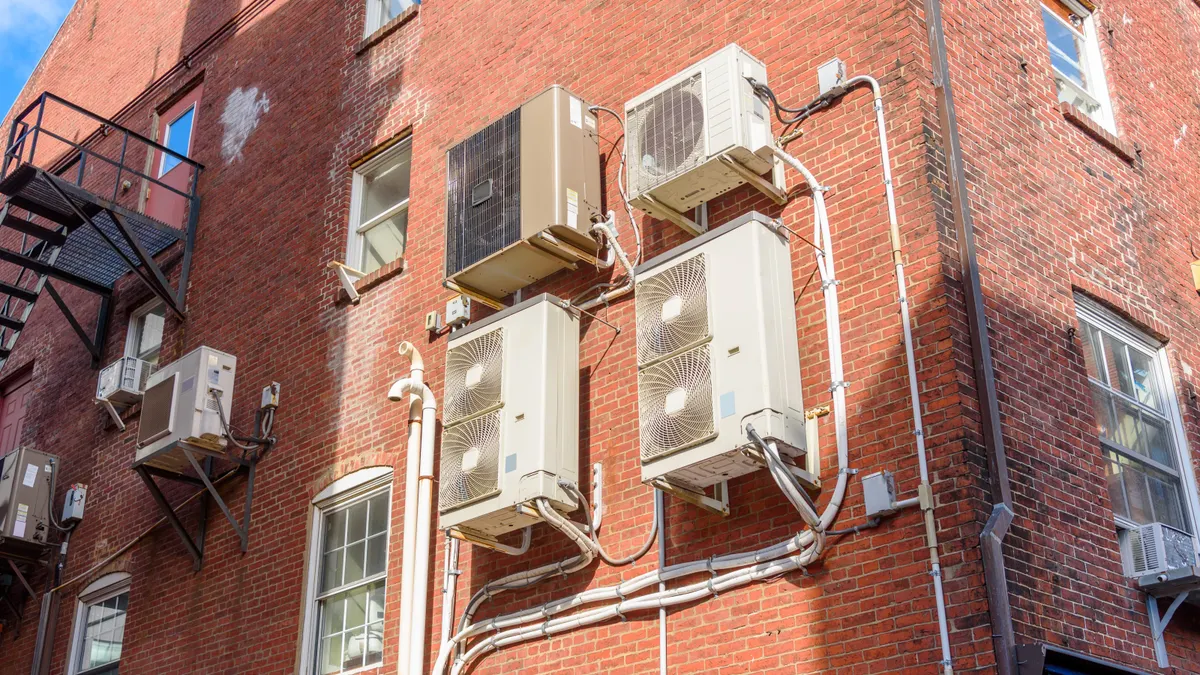The following is a contributed article by Devin Hartman, President & CEO of the Electricity Consumers Resource Council, and Caitlin Marquis, Director for the Advanced Energy Buyers Group.
The past two years of federal energy policy debates have focused on two key related areas: reliability and resilience. For more years than that, public debate has centered on the potential challenges associated with the retirement of traditional grid resources like coal and nuclear plants. Throughout all of this, the consumer voice has largely been ignored, instead overruled by incumbent electricity generators and political interests.
Consumers are ostensibly the beneficiaries of increased reliability and resilience — and they are surely the ones paying for it. The time has come for large energy consumers in the United States to insist that electricity policy puts consumers first.
As representatives of those large energy consumers, we know the importance of grid reliability. Some manufacturers incur tens of millions of dollars in damages from a single power outage. For data centers that host the country's Internet usage, the cost of an unreliable grid is $9,000 per minute on average, and as much as $17,000 per minute. Grid reliability is key to the health of our economy, but consumers are also sensitive to the trade-off in cost of achieving higher levels of reliability.
A consumer-focused policy agenda
Despite recent rhetoric to the contrary, it's possible to both ensure reliability and hold down costs. To do that, what's needed is a consumer-focused and economically sound policy agenda that reflects the evolving characteristics of the power industry, especially giving consumers more options to manage reliability and costs.
Part of the answer is competitive markets. Decades ago, consumers pushed for the introduction of competitive wholesale electricity markets to let economic forces determine investment decisions instead of traditional cost-of-service regulation, which placed both extra cost and risk on captive ratepayers.
Yet even in regions with competitive wholesale markets, the legacy of central planning of resource adequacy carries through to today, embodied in rules that treat economics as separate from reliability. This has resulted in overly rigid planning requirements that restrict innovation and presume that consumers are willing to pay $200,000 to $500,000 per MWh for uninterrupted service, despite economic evidence suggesting that consumers value reliability at a fraction of that cost.
We see this in regions like the mid-Atlantic, where the grid has over 25% excess capacity. Essentially, we build the grid like shopping mall parking lots — with enough capacity for Black Friday shoppers, but a sea of empty spaces the rest of the year. As electricity customers, we all pay the price.
The paternalism of this thinking on reliability is even worse when it comes to resilience, a poorly defined concept that has been at the center of several very expensive policy proposals over the past year. Generally understood as the capacity of the grid to withstand, or quickly bounce back from, disruptions due to extreme weather events or human attack, resilience has become the new imperative, whatever the cost.
As a result, prescriptive and bureaucratic planning requirements for resilience seek to safeguard the grid at a level beyond the one-day of outage in 10 years scenarios grid planners and regulators historically relied on. Proposals to engage in "resilience planning" would result in that standard creeping up towards one-in-50 or one-in-100 years or more — even though economically optimal planning would suggest that one in 10 is already more than sufficient.
If this failure to consider grid resilience through an economic prism continues unchecked, we will gold-plate the grid even more. Worse, rushing resilience reforms "in a panic may make us more vulnerable rather than less… and cost us a bundle," as one expert put it.
Enhancing reliability and resilience
In addition to ignoring cost, the recent reliability and resilience debate has also ignored that the power sector has changed, bringing new opportunities for flexible, cost-effective, and often customer-driven services that enhance reliability and resilience without costly and onerous mandates. Advanced energy technologies — whether storage, combined heat and power, renewables or fuel cells — are fundamentally changing the economic characteristics of the electric power industry. Consumers of all shapes and sizes are recognizing the rapid drop in cost of new technologies and are taking greater control of their electricity use by investing in them.
These new technologies mean we no longer need to bring the entire grid up to a costly, one-size-fits-all, level of reliability and resilience. It is now possible to choose your own path, in ways that benefit all. Large companies are increasingly able to manage the price and operational risk of outages by investing in their own distributed generation resource or other technology solutions (such as energy storage, efficiency improvements and advanced power controls), while also participating in demand response programs or even directly in the wholesale power markets to help maintain the reliability and resilience of the grid overall.
Customers that place the highest value on reliability — such as hospitals and military facilities — have never had more options to ensure that grid disturbances do not cause them harm. Even residential customers are increasingly active "prosumers" when given the chance.
At a grid level, new technologies like sensors, monitors and flow controls allow system operators to allocate scarce and increasingly distributed resources to the highest value uses during shortage periods. This diminishes the need to resort to rolling blackouts that curtail both optional and essential electricity uses. This differentiated approach can reduce the harm and the cost of stress on the grid to a level that is manageable to meet consumers' preferences.
To be clear, some threats to the grid are outside the scope of market design, such as cyberattacks. Yet policymakers should approach these and any new reliability challenges with an economic framework in mind, relying on competitive approaches to drive innovative and cost-effective solutions whenever possible.
Grid rules should weigh whether costs to consumers exceed the benefits or, at the very least, whether the danger of a so-called "resilience event" exceeds a risk level most consumers find acceptable. Those rules should not intrude on consumers' procurement flexibility, whereby consumers voluntarily pay to mitigate their own risk while improving the performance of the central grid.
A shift towards fostering decentralized decisions still requires centralized rules that ensure distributed and advanced energy resources adopted by consumers can be employed by grid operators to ensure grid reliability and resilience, while avoiding the cost of building or retaining other resources to provide the same function. This means thinking more in terms of bottom-up incentives and resource efficiency than top-down standards and resource adequacy.
Achieving grid reliability and resilience that meet customer needs, on a differentiated basis, will require a culture shift within regulatory agencies and grid operators away from reliability-at-all-costs and toward reliability-at-the-right-cost. Regulators and grid operators should use economic principles to drive results and apply cost-benefit analysis as a filter in decision making. We need to double down on competitive markets and consider consumer needs and grid needs as one and the same.
Economists call this achieving equilibrium. American families and businesses call it common sense.





















